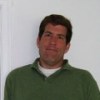-
"The Future, capital-F, be it crystalline city on the hill or radioactive post-nuclear wasteland, is gone. Ahead of us, there is merely...more stuff. Events. Some tending to the crystalline, some to the wasteland-y. Stuff: the mixed bag of the quotidian.
Please don't mistake this for one of those "after us, the deluge" moments on my part. I've always found those appalling, and most particularly when uttered by aging futurists, who of all people should know better. This newfound state of No Future is, in my opinion, a very good thing. It indicates a kind of maturity, an understanding that every future is someone else's past, every present someone else's future. Upon arriving in the capital-F Future, we discover it, invariably, to be the lower-case now."
-
"Occasionally you'll hear some intrepid thinker propose to use this as a source of power. If the particle always has that minimum energy, why can't we bleed off energy from the particle as nature constantly replenishes it to keep it at the zero-point value? Unfortunately it doesn't work. As weird as quantum mechanics is, it still doesn't give us away around thermodynamics."
-
Just what we need-- more hypothetical particles with silly names.
-
I need one of those dictionaries...
-
"It didn't even occur to the AAAS panelists that someone might find that here's-the-data-we're-right attitude patronizing--and worthy of skepticism. "Until scientists realize they need us, we can't help them," Bush says. "They have to wake up and say: 'I recognize it's not working, and I'm willing to listen to you.' It's got to start there." Science increasingly must make its most important cases to nonscientists--not just about climate but also evolution, health care, and vaccine safety. And in all of those fields, the science has proven to be incapable of speaking for itself. It's time for those with true passion to get over the stigma, stand up, and start telling their stories."
More like this
Last time on Sunday Function we talked about two types of symmetries that a real function might have: odd and even symmetry under reflection about the y-axis.
This is the third in a series of posts covering the basics of particle physics, originally posted back in 2003. In this installment, I talk about some of the hardware involved, specifically the CLAS detector at Jefferson Lab, because I've heard a good number of talks about that.
Over the weekend, in an attempt to cheer me up, a kind and generous reader sent me a link
"The new claim now is [a] boson with a mass of 16.7 MeV. But they don’t say anything about what went wrong in their previous claims and why we should not take those claims seriously." -Oscar Naviliat Cuncic

Re the last piece ("Why Science Needs to Step Up Its PR Game"), there's a very nice complementary piece in Nature:
http://www.nature.com/nature/journal/v463/n7279/full/463296a.html
Paywalled, unfortunately, but the article has many interesting things in it about how people's opinions actually form.
Sadly, scientists attempting to promote awareness of e.g. climate change are up against deliberate corporatist, political, and religious obstruction. The problem isn't the dullness or naivety of the masses, which isn't that bad anyway. With better leadership, they could easily appreciate most of the modern scientific perspective and concerns.